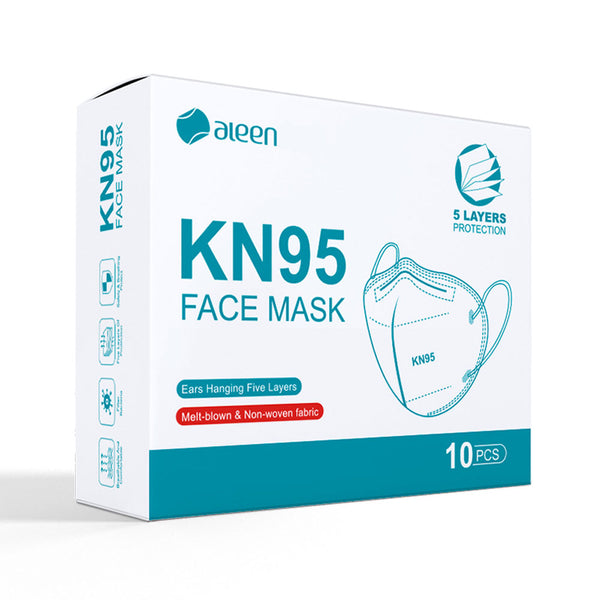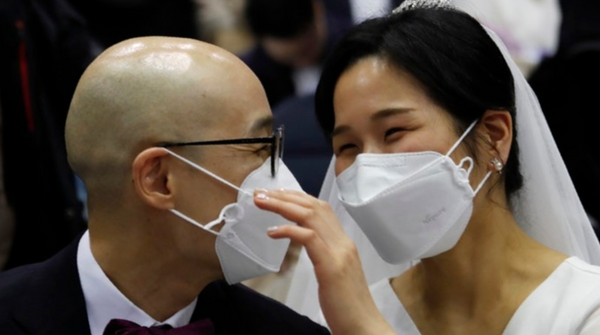N95 and Surgical Face Masks studied: Effective or a waste of time?
Posted by Chris Dangerfield on
A recent study from the Lancet shows that a 6ft separation is significantly more effective at reducing transmission of Covid-19 that 3ft.
Another article from the BBC has more to say on this too.
This study on viral transmission goes a good way to advising on other recommended steps to follow if you are considering venturing out, or going back to work, or you're going to be around friends and family who might be more vulnerable.

The 172 observational studies of the virus behavior were taken in community and healthcare settings - whereas previous studies likely were presumed from influenza patterns.
The risk of infection when individuals stand at least 3ft away was 3 percent, compared to 13% if they were closer. Every additional 3ft more cuts the risk by half again - researchers found.
Proper face masks reduced the rate of infection from 17 percent down to 3 percent. Wearing face shields, googles and eyewear reduced the infection rates a similar number.
Next, we cover briefly the differences between a few of the face mask types you will have seen in the wild:
With that in mind, here is a short summary and review of our thoughts on the different types of face masks on the market.
Face Masks: Which are the best to wear and why?
We’ve been doing a lot of studying lately so you don’t have to. And in light of all the news sources that come out with sometimes conflicting information, here is where we as a company are in terms of deciding what to wear, what to stock and where our limits are.
Are face masks useful?
Let’s assume that healthcare professionals know what they’re doing. Let’s assume that mask studies such as these are relevant, showing that specialised face masks work. Most of us haven’t worn a mask before, or at least - not one outside of halloween season.
Are all these professionals who work around viruses and bacteria who have to stay clean and healthy just wearing them for vanity? We don’t believe so. So let's say they're probably more useful than wearing nothing if you have to interact with, or be close to people, whether that's at work, or around your home.
There are so many types and specifications of face masks - what’s best?
The primary types of face masks you’ll see used in healthcare and in public are:
- The standard often blue-colored surgical type that makes you look like a doctor
- The N95 type, that could make you look like a duck. Or an alien.
- More recently, the fabric type. Maybe you made one out of a t-shirt
- The asian kinds of shaped face masks used in daily life
What are the differences?
Which is the best kind of face mask?
We’re trying to avoid what is essentially a type of flu. Covid-19 is different of course, and it’s not exactly the flu, but it’s close enough for the purposes of this brief educational blog.
Let’s look into each of the types above:
1. The Disposable Surgical Face Mask:
These are often the most common to buy, used for the least amount of time, and the most commonly used by healthcare professionals, especially, like ours if they are CE registered. It’s important to recognise that there are key elements to surgical masks that make them useful in the pandemic.

The key features of a surgical/medical mask:
- They have an outer hydrophobic layer that rejects and repels liquids and moisture
- They are ‘melt-blown’ and not made out of standard fabric, so the microscopic ‘holes’ in the material will not let particles through above a certain miniscule size.
- They are designed to be one-use, disposable and comfortable to wear
- There are a variety of levels of effectiveness, and this rating determines where in healthcare they can be used.
Without going too much into detail - they block and protect against a spray of liquids or transfer of particles through droplets through their materials construction. You will probably want an ASTM1 rated medical mask as a minimum for healthcare / hygiene use. And they are made to be comfortable because of their intended one-time daily use before disposal.
2. The N95 / KN95 PPE Face Mask:
These are the usual ‘recommended’ better quality filtering masks, and like ours, the good ones are CE registered. One of the standard PPE types for healthcare workers due to the higher number of layers and meltblown fabric, these are normally used in situations where dangerous airborne particles above a certain size are prevalent.

N95 isn’t the only numeric categorisation available. The number determines how much of a particular test particle is blocked by the filters of the mask. However, in reality this is affected by how tight the mask fits around your face. In theory, to wear these properly and experience the full benefits, normal air should not be able to get in through any gaps in the mask.
You may have seen some shocking photos online showing how healthcare workers have welts around their faces from wearing masks extremely tightly for hours on end. There are reasons for that.
In a normal situation, you probably won’t wear the mask correctly… because of the lack of comfort. Again, for healthcare workers - they are trying to prevent every single foreign particle from entering their airflow - hence the higher level of strictness.
So what are these ratings I’ve seen: KN95, FFP2 or N99...
KN95 is the Asian/chinese rating for masks that are basically the same as the US N95 standard. This is tested with the same substance as the N95, and the test will show that 95% of this substance is blocked by the material.
While N99 might sound like a good idea … in order to block 99% of the substance, it has to restrict your ability to breathe through the material by that much more. To emphasize the difference artificially, imagine trying to suck air through a rubber sheet vs. a sheet of linen.
Adding to this, if you have seen people wearing N95-looking masks with valves - those are sometimes problematic because we are trying to stop everyone from breathing out airborne particles forcefully with masks ... whereas the valve does the opposite.
FFP2 is one of the European standards for masks which are again about equivalent to N95.
Here is a breakdown of the different types of N-ratings from around the world:

3. The Fabric T-shirt Face Mask (Home made):
These are ‘better than nothing’ - but fall very low on the protection spectrum. We know that breathing causes moisture build up on the inside of your mask - and this eventually, depending on how dense the fabric is - will saturate the whole of the mask. The water saturated mask passes bacteria from one side to the other. Which kind of defeats the point of using one…

So you might assume that you have at least 10 - 30 minutes of usable time? Actually, that’s difficult to say. The holes in normal fabric is much, much, much larger than the specialised materials used in healthcare masks. So it’s likely that the thing you are trying to protect against will get sucked right through those holes. That’s why they are generally more expensive.
I wouldn’t say they’re useless if you have nothing, they’re assumed to be a bit effective - but the size of viruses are usually smaller than normal smoke, or scent particles. If you had to trust your life to not catching a virus - this would be above nothing, but not the best that you could do.
If you see places selling fabric masks with no filter - then those are great for vanity, but perhaps not so good hygiene-wise. But that can be your personal preference.
4. The Asian styles of face masks
These masks are usually intended to block pollen, and actually, are more intended to prevent the infected person from sneezing on everyone else. While they are likely not as good as a standard N95 mask - if everyone is wearing one, then that severely restricts the infection vector for communities. Everyone wears one to protect everyone else. It’s more the ubiquity than the specific effectiveness of one single mask-wearer.

I hope this summary helped. I know we started off confused at the start of the pandemic, and hopefully this will enable you to make more educated choices.
5. Face Mask Covers (which are not face masks)
Strangely, some companies have started selling face mask covers while there's a shortage. These are pretty - but they appear to offer no protection in themselves. If you do not manage to purchase a proper filter for these (N95, or NIOSH) then they are essentially thinner than t-shirt masks.
If you're at all serious about your health, or the health of others we wouldn't recommend these at all. If on the other hand you want something that looks fun - and you already have a proper mask - then go for it. There's absolutely nothing wrong with looking for moments of levity during these unusual times.
Equally, some washable face masks fall into this category. Every time you wash a mask, you lower the efficacy, since the tiny fabric 'holes' are enlarged with each wash. Larger holes equals more risk.
Ultimately - check the filter type and check the material.
Share this post
- Tags: disposable face masks, facemasks, n95, surgical masks
